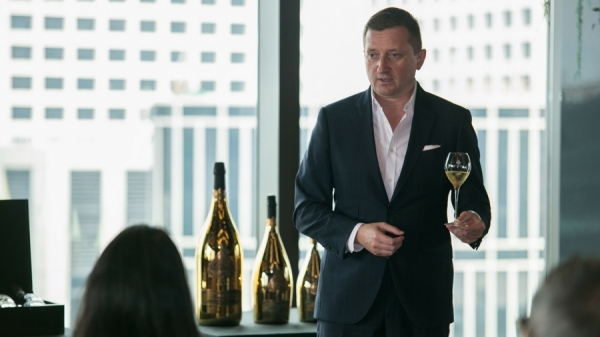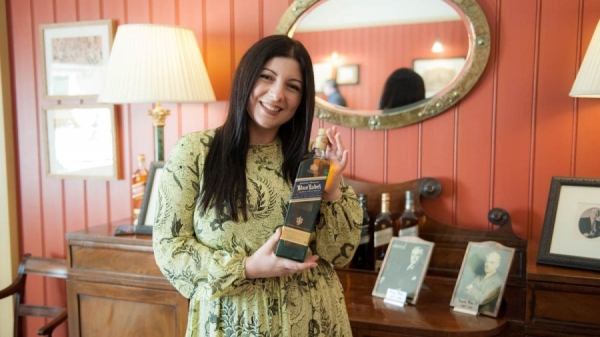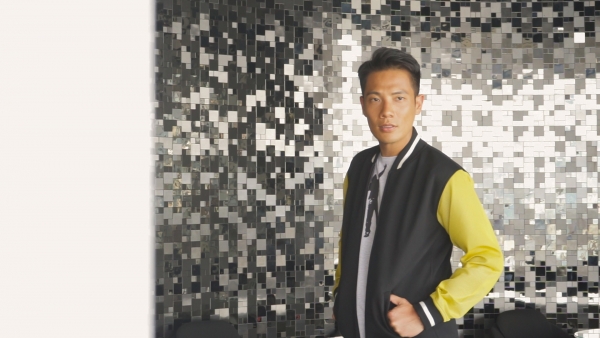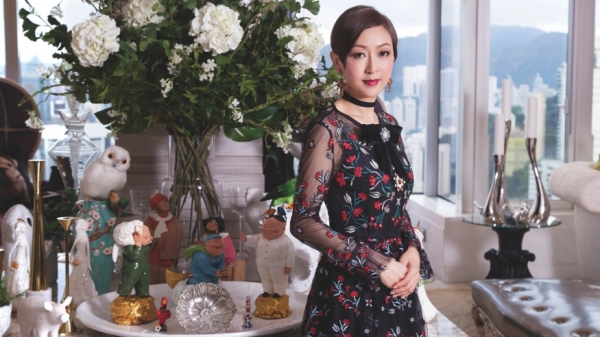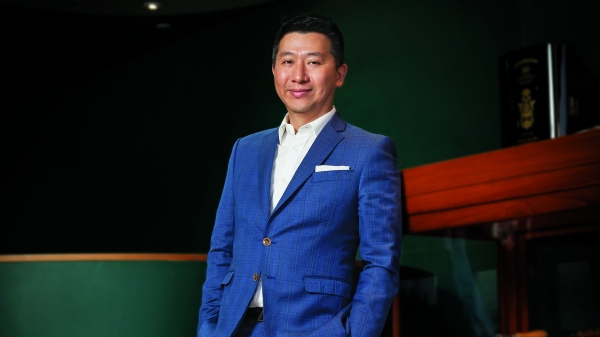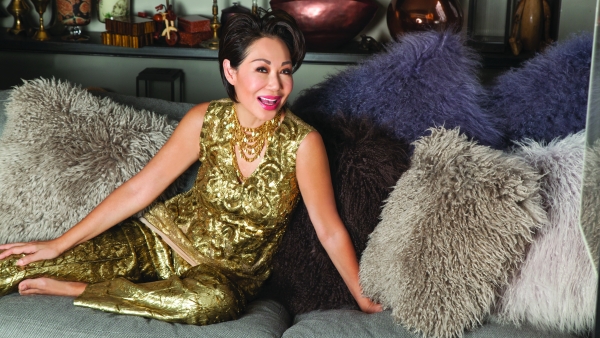Shirley Chan is the co-founder and vice-chairman of Moiselle Group, a Hong Kong-based fashion brand celebrating its 20th anniversary this year.
Why did you launch Moiselle in 1997?
I have loved fashion ever since I was young and I’ve always followed the latest happenings in the industry, so it was an easy decision to start a fashion company with my husband.
Before we founded Moiselle, my husband and I started a fashion trading company and we met lots of fashion industry experts from different countries. When I travelled to Europe for work I’d visit the stores of famous fashion brands and over time I gained an appreciation of their work.
With our love of fashion and seeing what other brands were doing, we thought it would be a good idea to set up a local fashion brand.
Why start in 1997? It was good timing with Hong Kong returning to China. This was a special year in many ways for lots of Hong Kong people. Even though many of my friends decided to leave, I wanted to stay and build confidence in the city. My husband and I knew that we had the experience and confidence to set up Moiselle at that time.

What challenges did you face at the beginning?
There were many difficulties. First of all, because Moiselle was a new brand, landlords refused to rent us space in shopping malls or in good locations as we were considered an ‘unpopular tenant’. Landlords would only rent to international brands. It took us a long time to earn any sort of recognition because we were a local brand.
The financial crisis in 1997 forced a lot of the international brands out of Hong Kong and this opened up a number of options for us that we didn’t have before. It also pushed rental prices down.
My husband and I knew that we had to have our own brand DNA to stand out. We knew the importance of fabric, as it acts like a second layer of skin. So we decided to use European designs and fabrics. It’s essential that our customers feel comfortable and look stylish in our clothes.
We used our skills in tailor-made embroidery while also keeping an eye on the latest fashion trends. How clothing looks on your body depends not only on style, but also the tailoring. If an item doesn’t fit, no one will buy it no matter how cheap or expensive it is.
We decided to use all of these elements to position our brand, and luckily we were quickly accepted by the market.
Moiselle celebrates its 20th anniversary this year. How has the fashion industry changed since you started?
Unexpectedly, it has changed a lot. Twenty years ago, customers were more single-minded. An example of this is customers buying a whole outfit they saw at an international brand’s fashion show. At that time, famous department stores or multi-brand stores had a lot of customers spending money.
Another change occurred in 2004 when China opened up its economy and started the Individual Visit Scheme, which opened us up to a big group of potential customers. The Chinese have strong purchasing power; price is never a problem to them. They are more concerned about whether a product makes them stand out, so they shop for beautiful clothes to make themselves look rich and powerful.
[{"id" : "23883","image" : "https://www.gafencushop.com/wp-content/gallery/1708_shirley-chan/MG_9677.jpg","caption" : "_MG_9677"},{"id" : "23886","image" : "https://www.gafencushop.com/wp-content/gallery/1708_shirley-chan/MG_9744.jpg","caption" : "_MG_9744"}]
How does Hong Kong’s fashion industry compare to the West? What can we learn from those markets, and is there anything they can learn from us?
Europe is very different to Hong Kong. European fashion houses have a well-developed vision for their brands. Cultural values and society are influential. A lot of family businesses have great success because they put a lot of focus on cultural values.
When it comes to managing a brand, companies in Europe are successful because they are clear in what they want to do, like Hermès and Chanel. We could learn a lot from them about design, promotion and marketing, to name a few.
Even though some companies have lost the spirit of their brand – for example, the passing of Coco Chanel – this has not damaged their brand or affected how they are seen in the fashion world. This is something Hong Kong brands can also learn from.
Brands generally draw upon each other for inspiration. A number of representatives from international brands have visited our stores and we talk to them about our designs and products. It’s good that a lot of international buyers and designers purchase our outfits as well.
There is always something to learn from a brand’s success or failure, and then it just depends how you use the information.
Do you have any plans to expand into Europe? How do you decide which markets in Asia and the rest of the world to target?
We did think about it, but because of the financial crisis, it didn’t work out. I think we have more to gain by putting our resources into China. The only way we would move into Europe is if we found a working partner who would be responsible for distribution, leaving us to provide the products. But if you are talking about a full investment by our group, I would pick China.
The country is getting stronger, which in turn means that Chinese travel quite a lot. The Chinese are also more willing now to accept new things.
I think Moiselle needs to pick up the pace to catch up with the Chinese market. We should have closer contact with them than we currently have. We are planning to open more stores in major cities in China. Moiselle has also signed on with an online platform to help promote our brand, and we are expecting big things this year.
What was it like to run a business with your husband while also raising a family together?
My husband and I share the same views, targets and beliefs. But we also have expertise in different areas. I am strong in design and operation, and my husband is strong in finance, company development and marketing.
If we have different opinions, then obviously that does lead to disagreements. My husband is the chairman and I am the vice-chairman, so of course I have to work with him. But within my role, if I feel that my direction is correct then I will definitely try to push it. However, the final decision has to benefit the company.
When our kids were young, we mainly phoned them Monday through Friday because all of our attention went into work and it was hard to see them. Luckily,our children knew why mummy and daddy worked so hard. We also brought them with us to the office on certain days so they could understand the industry we work in.
On weekends, we made time to be together as a family, and sometimes with our friends.

“My husband and I share the same views, targets and beliefs. But we also have expertise in different areas”
Your son Harris is the creative director for Moiselle. How important was it to keep the business in the family?
Keeping the business in the family has its advantage, as it’s a kind of inheritance. This doesn’t mean, however, that the successor to the business has to be a family member. If any family members are talented enough to take over the business, then of course they would be the successor.
The person who fills this role must have beliefs and views that are in line with the company, and they must also have the talent. In my opinion, my son Harris is suited to the role. He is talented, he works with passion and he is also very creative.
The team also knows he is fully focused on his work and he has a clear vision for the future development of Moiselle. The younger generation is our future, and I aim to keep developing the group to help them be successful.
Which fashion designers inspire you?
A lot of designers inspire me, but there are two that stand out. The first is Coco Chanel, because of how she helped the brand evolve from accessories to different collections to handbags and shoes. The other is Dolce & Gabbana. Every one of Dolce & Gabbana’s products is a surprise. They bring out the uniqueness of a person. Not only is the women’s collection a success, but so is the men’s collection. The brand has a lot of variation, which inspires me.
How would you describe your personal style?
My friends love my style, and they love to shop with me to get advice. Clothing is a way to show my personality to others. I would consider my style to be diverse. I like smart casual, with elegance. I love to mix and match. I make use of accessories and colour to stand out. I think a new piece has to add new elements to my existing wardrobe. That’s why I love buying small accessories, scarves, belts, shoes, socks, hats and glasses.

“My friends love my style, and they love to shop with me to get advice. Clothing is a way to show my personality to others”
What has been your proudest moment at work?
My proudest moment is split into different stages because my work has changed over time.
I am happy and lucky to have been honoured with the Golden Bauhinia Woman Entrepreneur Award last year. The award recognised my contribution to the industry and also the work of my team.
Also last year, Moiselle received the Listed Company Award of Excellence from the Hong Kong Economic Journal. It is hard to operate a business in this day and age so I was proud when we were honoured with the award. Another proud moment was when we were listed on the Hong Kong Stock Exchange in 2002.
You have worked for a number of charitable organisations. How do you decide which ones to support?
I mainly focus on organisations that deal with women, children and the elderly. For example, we supported events for the Hong Kong Breast Cancer Foundation for five years. I have been a member of the Zonta Club of the New Territories since 2006, and Moiselle has held fundraising activities for underprivileged women. In the future, we hope to help single-parent families and the elderly. We need to show patience and care towards the elderly – not only money. The elderly built Hong Kong for us and now we need to give back to them. I also focus on helping Christian organisations, as I am a Christian.
How do you unwind when you’re not working?
I love hiking up to Victoria Peak to take in the architecture and the view. I am going to New Zealand for a five-day hiking trip in November, and I’ll hike about 20km a day on the last three days. I also enjoy walking around the streets of Hong Kong, and going to church is important to me.

Text: Andrew Scott/Alice Chang










